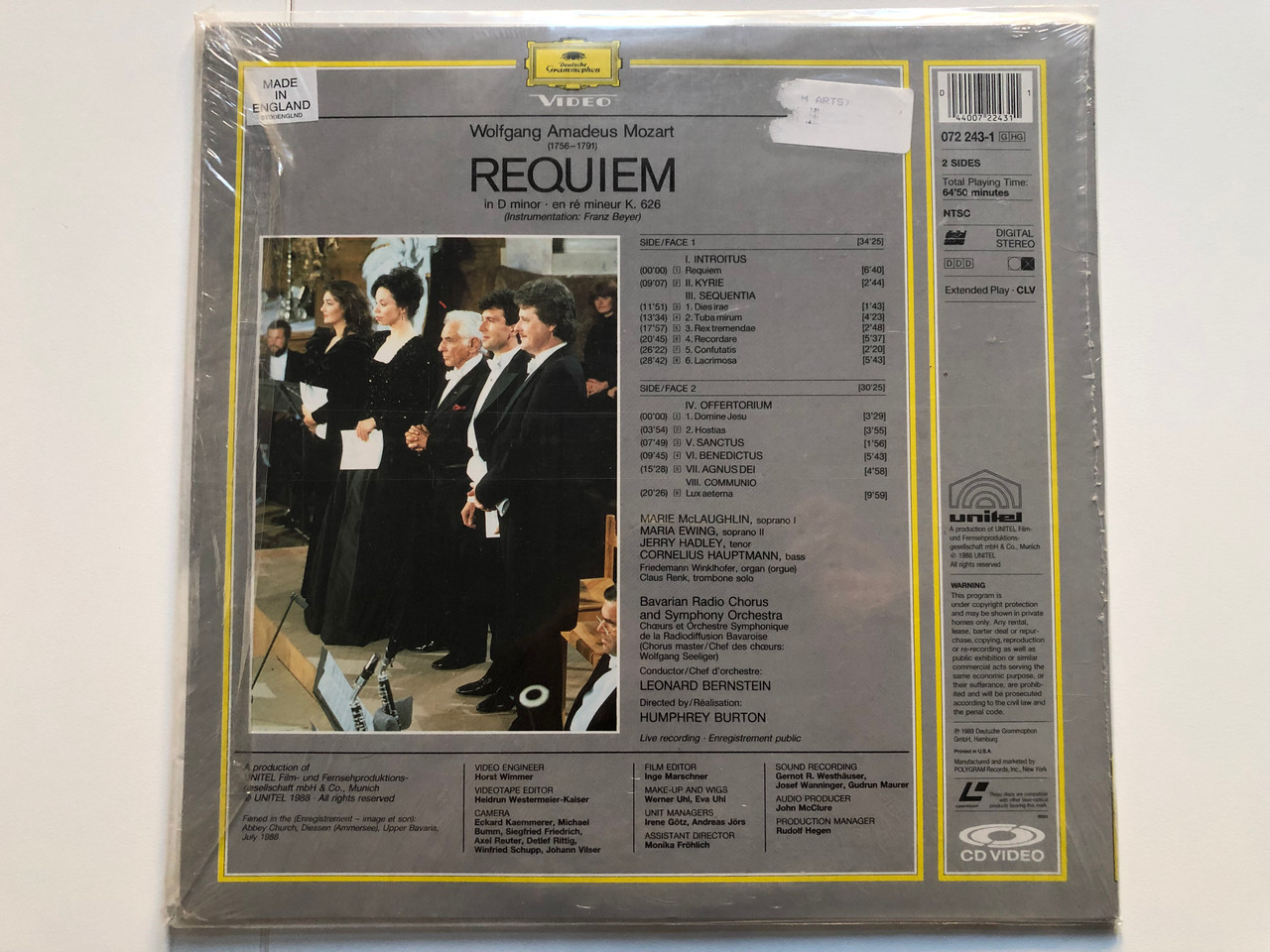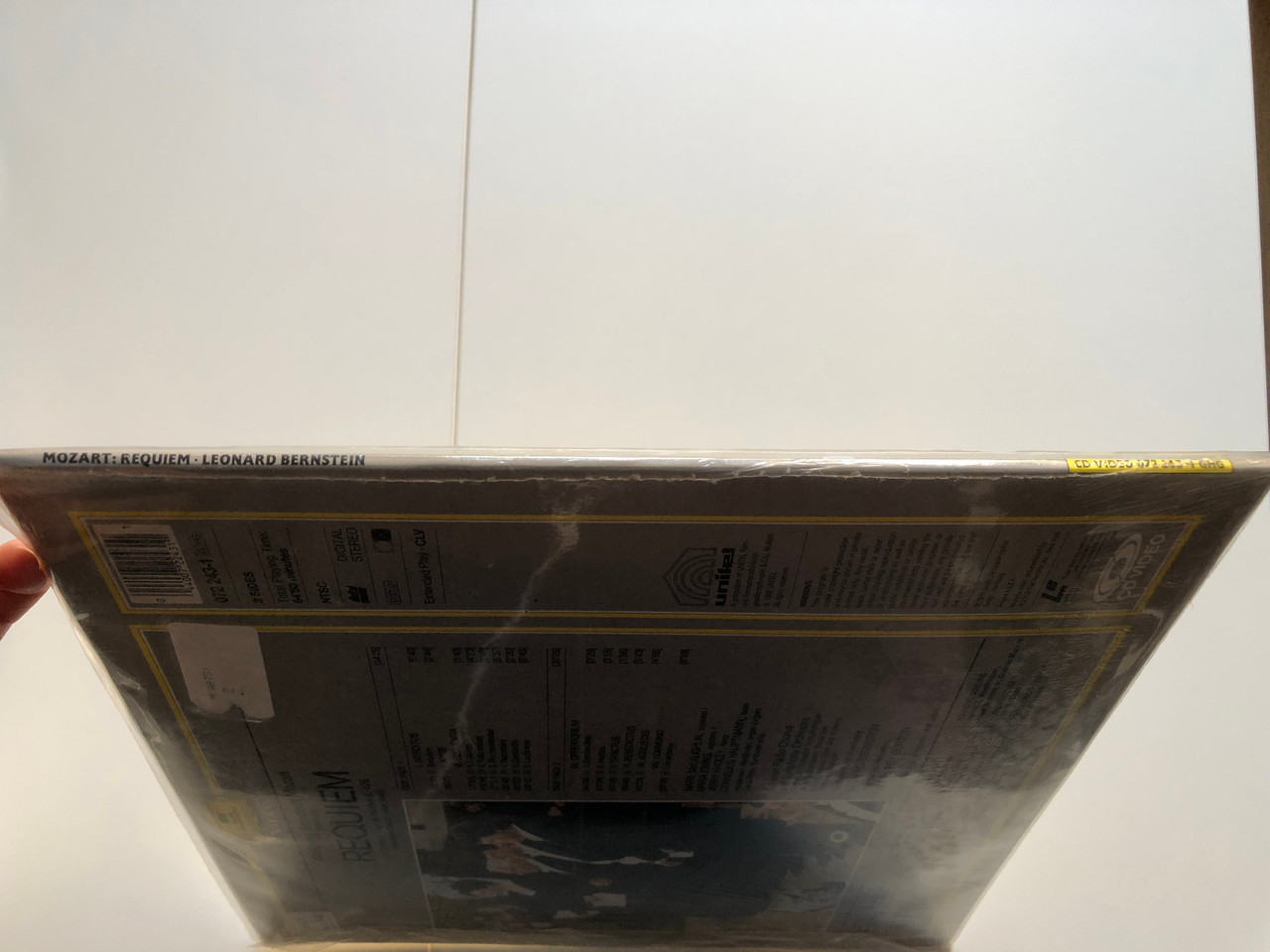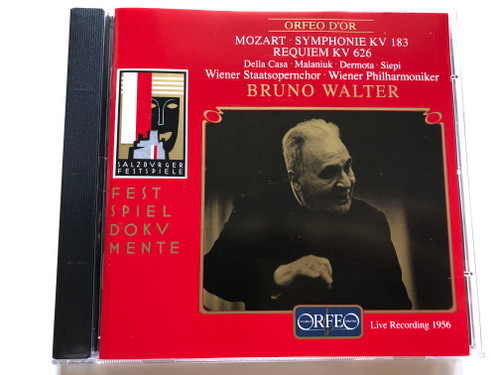Product Overview
Wolfgang Amadeus Mozart (1756-1791) / Requiem in D minor, en re mineur K. 626 / Instrumentation: Franz Beyer / Chor & Symphonie Orchester Des Bayerischen Rundfunks / Leonard Bernstein/ / Laser Disc CD Video
UPC 044007224311
!!! Condition of DISC is USED - VERY GOOD !!!
Total playing time: 64'50 minutes
Made in England / Printed in U.S.A. 1989
NTSC
Laser disc: a disc resembling a larger CD but able to store video, now generally replaced by the DVD.
Featuring:
Marie McLaughlin - Soprano I
Maria Ewing - Soprano II
Jerry Hadley - Tenor
Cornelius Hauptmann - Bass
Friedemann Winklhofer - Organ
Claus Renk - Trombone Solo
The Requiem in D minor, K. 626, is a requiem mass by Wolfgang Amadeus Mozart (1756–1791). Mozart composed part of the Requiem in Vienna in late 1791, but it was unfinished at his death on 5 December the same year. A completed version dated 1792 by Franz Xaver Süssmayr was delivered to Count Franz von Walsegg, who commissioned the piece for a requiem service on 14 February 1792 to commemorate the first anniversary of the death of his wife Anna at the age of 20 on 14 February 1791.
The autograph manuscript shows the finished and orchestrated Introit in Mozart's hand, and detailed drafts of the Kyrie and the sequence Dies irae as far as the first eight bars of the Lacrymosa movement, and the Offertory. It cannot be shown to what extent Süssmayr may have depended on now lost "scraps of paper" for the remainder; he later claimed the Sanctus and Benedictus and the Agnus Dei as his own.
Walsegg probably intended to pass the Requiem off as his own composition, as he is known to have done with other works. This plan was frustrated by a public benefit performance for Mozart's widow Constanze. She was responsible for a number of stories surrounding the composition of the work, including the claims that Mozart received the commission from a mysterious messenger who did not reveal the commissioner's identity, and that Mozart came to believe that he was writing the requiem for his own funeral.
In addition to the Süssmayr version, a number of alternative completions have been developed by musicologists in the 20th century.












